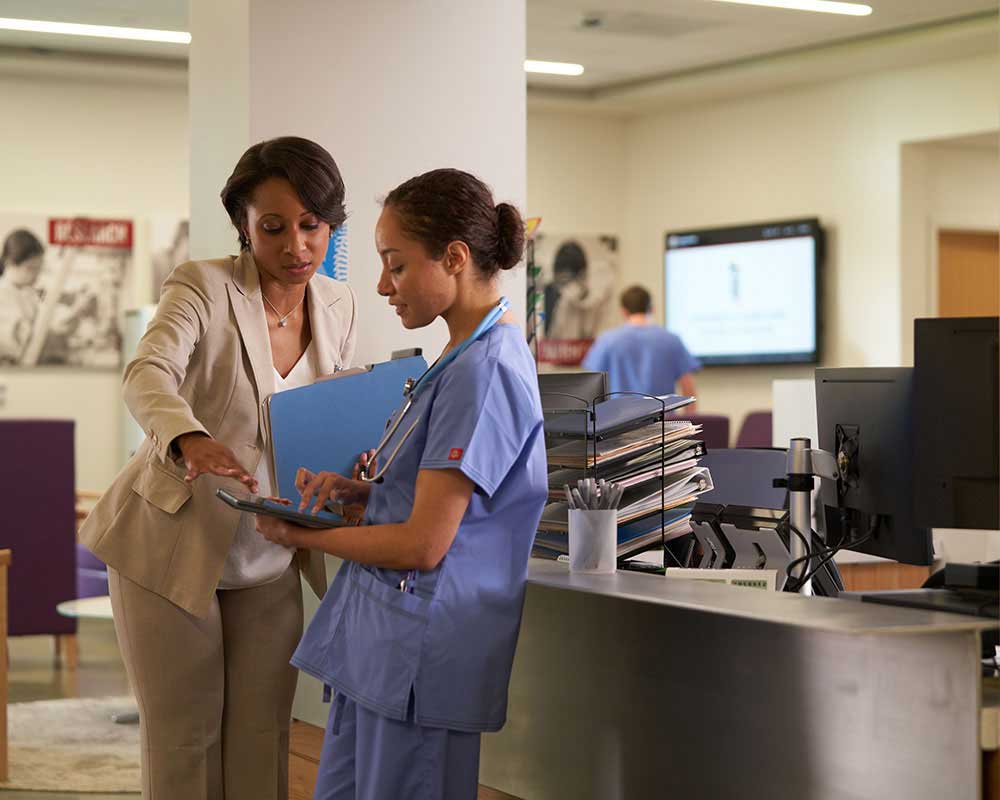The Future of Medical Administration: Patterns and Innovations to Enjoy
The Future of Medical Administration: Patterns and Innovations to Enjoy
Blog Article
Finest Practices in Medical Management for Improving Efficiency and Reducing Expenses
In the ever-evolving landscape of health care, the pursuit of best practices in medical administration is vital for enhancing effectiveness and curbing expenditures. By incorporating advanced technologies such as digital wellness documents and telemedicine, health care companies can enhance operations and enhance person treatment.
Leveraging Advanced Modern Technology
In today's quickly progressing health care landscape, leveraging innovative innovation is no more optional but essential for reliable medical management. The integration of electronic remedies into healthcare systems has changed the way centers run, simplifying procedures and improving client treatment. Electronic Health And Wellness Records (EHRs) are essential, offering thorough patient information that can be accessed instantly by authorized personnel, thus minimizing redundancy and minimizing mistakes. By systematizing person details, EHRs get rid of the demand for difficult documentation and promote seamless interaction among healthcare companies.
Telemedicine is an additional technological innovation that has changed individual communication. It uses comfort for both individuals and medical care professionals by enabling remote consultations, which can decrease the need for in-person sees and enhance visit scheduling. Additionally, telehealth platforms can extend healthcare accessibility to country or underserved locations, connecting gaps in care shipment.
In addition, the use of Artificial Knowledge (AI) and artificial intelligence is coming to be significantly widespread in predictive analytics, permitting early detection of possible health and wellness issues and more informed decision-making. These innovations, when integrated properly, can enhance diagnostic precision and personalize patient treatment plans, inevitably resulting in improved health care end results and functional performance.
Optimizing Source Allowance
Efficient resource allotment is vital for taking full advantage of the efficiency of medical administration. By purposefully taking care of sources such as personnel, equipment, and funds, healthcare facilities can significantly boost their operational performance, improve client results, and lower unnecessary expenditures. The primary step in maximizing resource allotment includes performing a detailed analysis of present assets and determining locations where resources might be underutilized or exhausted. This evaluation must be data-driven, making use of metrics and analytics to educate decision-making procedures.
Focusing on resource appropriation based on person demands and service needs is essential. Executing adaptable staffing versions can also enhance labor sources by changing employees allocation in action to changing client quantities.
Funds should be thoroughly monitored and allocated with tactical foresight to sustain both short-term functional demands and long-lasting institutional goals. This includes investing in training programs that enhance team proficiencies and adopting energy-efficient practices that decrease functional costs (medical administration). Eventually, an optimized source allocation approach cultivates a lasting healthcare environment that is responsive, effective, and economically prudent
Streamlining Workflow Procedures
When medical care centers aim to boost functional effectiveness, enhancing operations processes ends up being a pivotal focus. Effective operations reduce redundancy, remove unnecessary steps, and improve control among healthcare professionals. This strategy not just speeds up solution shipment yet additionally enhances the quality of person treatment.

Following, modern technology combination plays a substantial role in simplifying process. Applying electronic health records (EHRs) and electronic doctor order access learn this here now (CPOE) systems lowers documents, decreases human mistake, and makes sure details comes to all relevant personnel. In addition, leveraging telemedicine platforms can enhance patient examinations and follow-ups, reducing the stress on physical infrastructure.

Inevitably, structured operations result in cost decreases and enhanced client contentment, cultivating a more lasting medical care environment.
Enhancing Data Monitoring
Building upon structured workflows, optimizing information management ends up being a vital part beforehand healthcare administration. Reliable data monitoring systems are vital for preserving precise individual documents, enhancing decision-making, and guaranteeing conformity with regulatory requirements. By implementing durable information monitoring services, medical care facilities can improve the top quality of patient treatment while concurrently decreasing functional costs.
One key facet of enhancing data management is the combination of advanced electronic health record (EHR) systems. These systems promote the seamless exchange of patient info throughout various departments, lowering replication of tests and decreasing errors. A properly designed EHR system sustains information analytics, making it possible for healthcare service providers to recognize trends and make informed choices relating to client care.
In addition, securing person information is paramount. Taking on detailed cybersecurity steps, including security and regular audits, ensures the integrity and discretion of sensitive information. This not only safeguards patients yet also keeps the organization's online reputation.
Spending in team training is another important element. Informing healthcare professionals on data monitoring practices enhances their ability to efficiently use innovation, leading to improved individual outcomes. To conclude, boosting information administration with innovative innovation and extensive training is essential for achieving performance and price reduction in clinical administration.
Fostering Collaborative Interaction
A critical element ahead of time clinical management is cultivating collaborative communication among healthcare professionals. Efficient interaction is vital for guaranteeing smooth patient care, maximizing treatment results, and lessening mistakes. By motivating open discussion and control across multidisciplinary groups, healthcare companies can improve their operational efficiency and minimize unneeded prices.
Central to this technique is the assimilation of interaction technologies such as digital health documents (EHRs) and safe and secure messaging platforms, which help with the quick exchange of vital client information. These devices make it possible for doctor to accessibility and share data in genuine time, making sure that all staff member are notified and aligned in their decision-making procedures. Furthermore, normal group meetings and investigate this site interdisciplinary rounds can better advertise a society of collaboration and responsibility.
Training programs concentrated on improving interaction abilities are also necessary. These programs can assist team create you could check here the ability to share details plainly and listen actively, hence minimizing misunderstandings and fostering a helpful workplace. Furthermore, taking on standardized communication procedures, such as SBAR (Circumstance, Background, Analysis, Referral), can improve the exchange of details, guaranteeing that vital information are communicated succinctly and effectively. Inevitably, fostering joint communication leads to improved medical care shipment and cost savings (medical administration).

Verdict
Including advanced technology, such as digital wellness records and telemedicine, along with enhanced resource allotment and streamlined workflow processes, is essential for boosting effectiveness in clinical management. Effective information management and cultivating collective interaction amongst health care teams are essential for reducing redundancies and enhancing care quality. By focusing on preventive care and engaging in top quality improvement campaigns, medical care companies can achieve considerable cost savings and improved person end results, thereby making sure sustainable medical care distribution in an increasingly complicated atmosphere.
Report this page